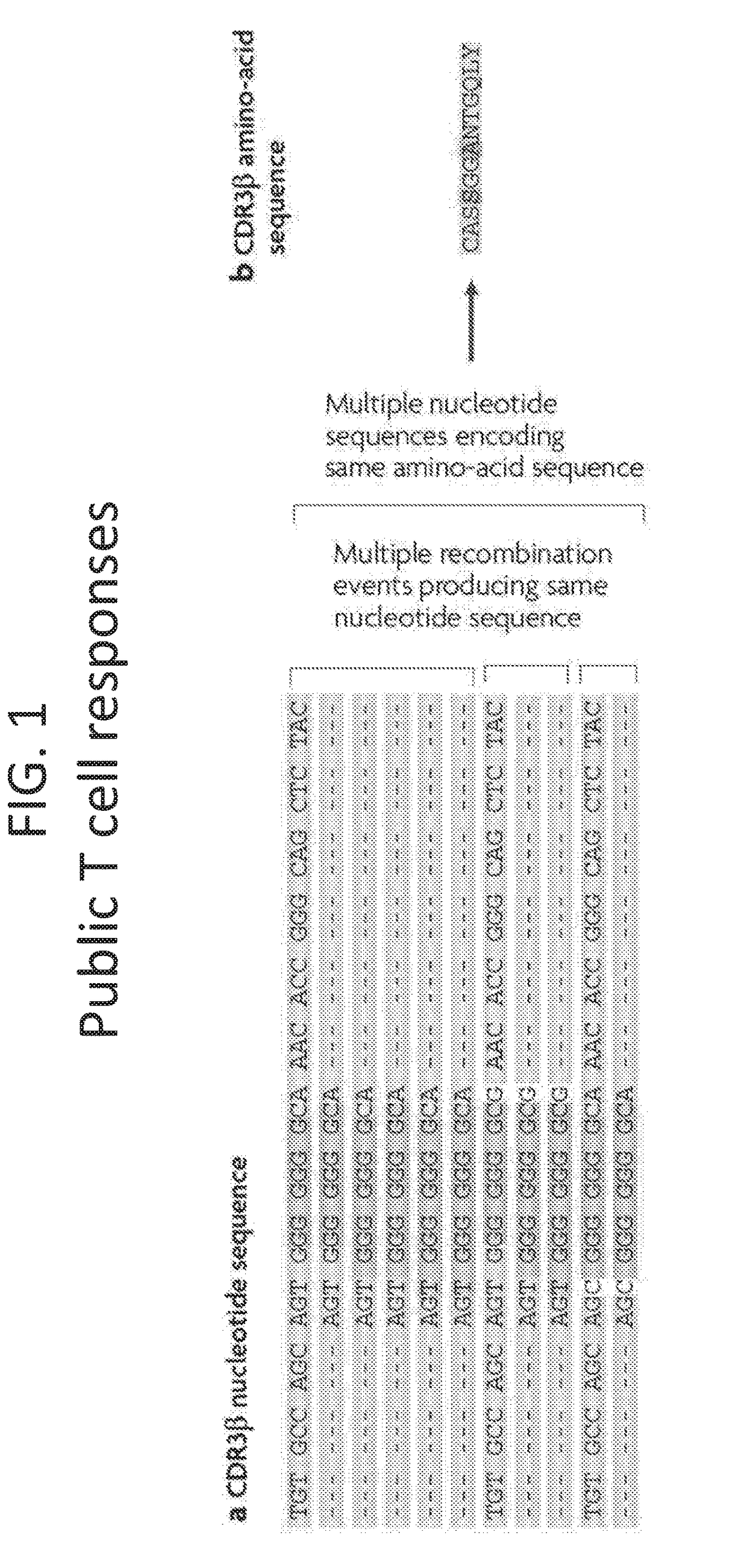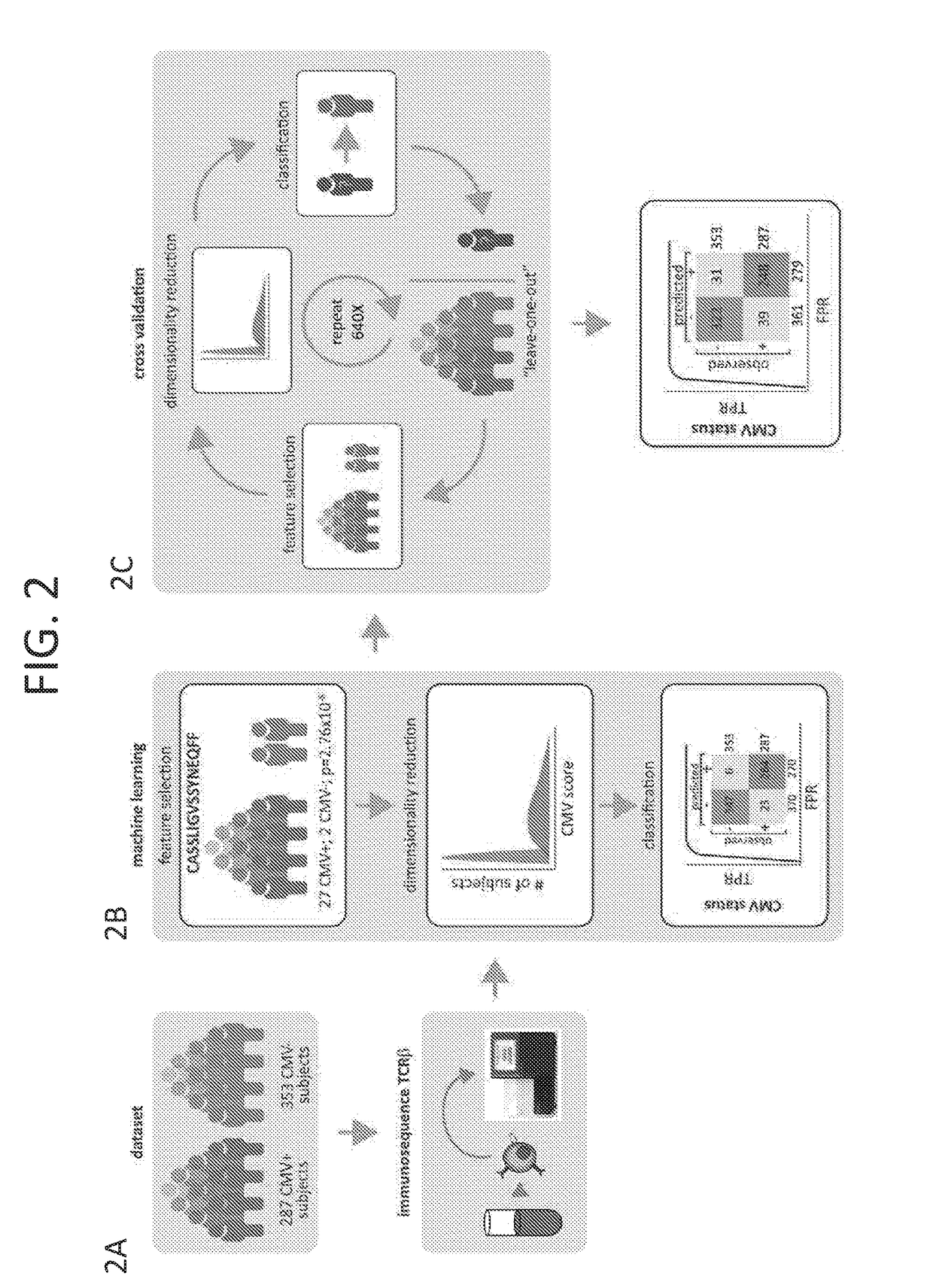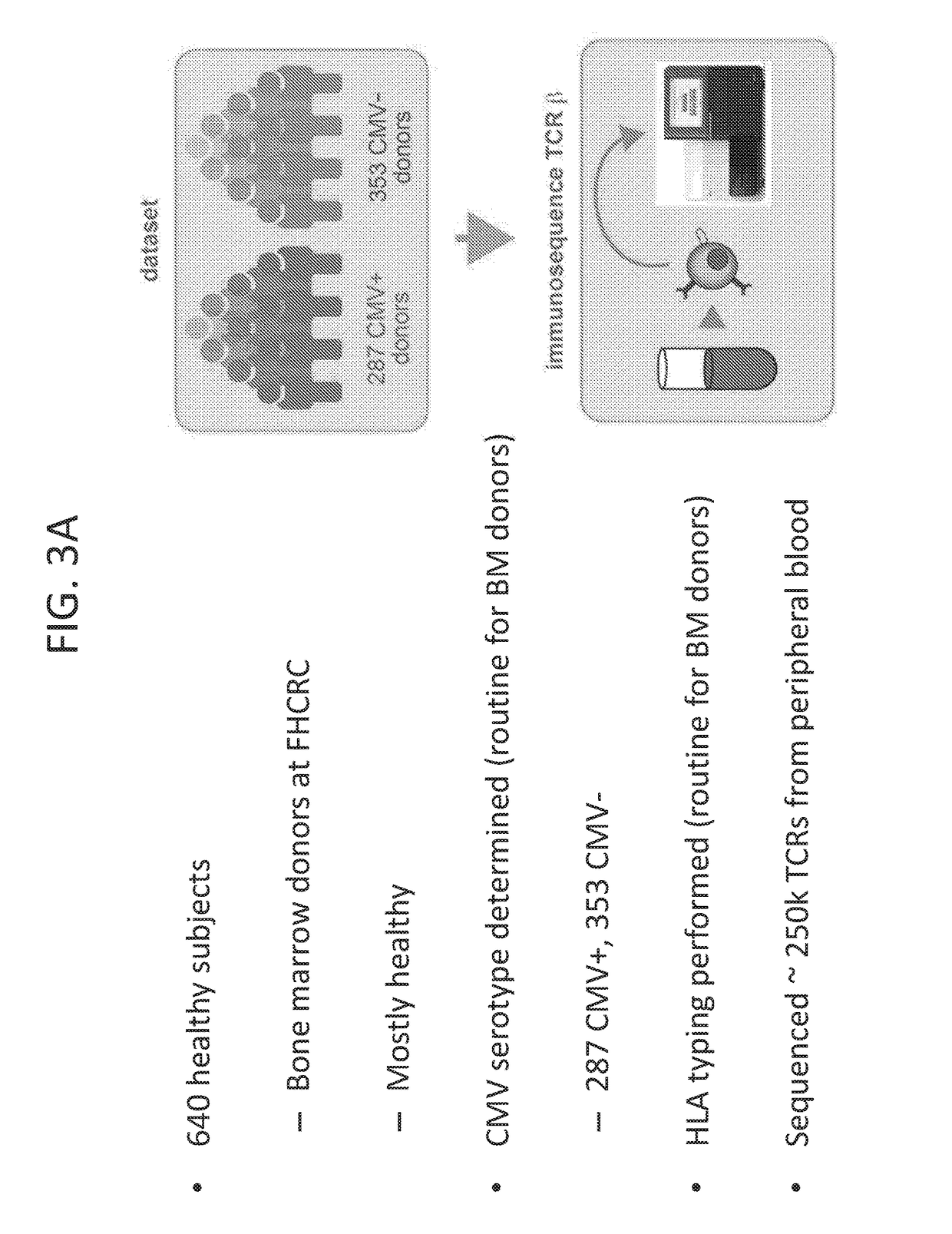Methods for diagnosing infectious disease and determining HLA status using immune repertoire sequencing
a technology of immune repertoire and infectious diseases, applied in the field of infectious disease diagnosis and hla status determination using immune repertoire sequencing, can solve the problems of limited sequencing depth and the size of investigational cohorts, limited to high frequency, and relatively small number of public t cell responses to da
- Summary
- Abstract
- Description
- Claims
- Application Information
AI Technical Summary
Benefits of technology
Problems solved by technology
Method used
Image
Examples
example 1
ation of Cytomegalovirus (CMV)-Associated TCRs and Classification of CMV Status From Immunosequencing Data
[0134]The first aim of the study was to create a comprehensive catalog of CMV-specific T cell receptor sequences. The goal was to identify both common and rare, shared TCRβ sequences enriched in CMV seropositive individuals relative to CMV seronegative individuals. CMV was used as a model because it provides an ideal test bed for the development of T cell biomarkers. CMV serostatus is widely available and easy access to near-equal numbers of seropositive (cases) and seronegative (control) individuals among healthy adults provides good statistical power for a rigorous analysis.
[0135]There are many possible TCR sequences generated during VDJ recombination (˜1012 easily accessible by VDJ recombination). As shown in FIG. 1, different VDJ recombination events may result in the same nucleotide sequence. Moreover, it is possible that VDJ recombination can result in different nucleotide...
example 2
ation of HLA Type
[0170]The first aim of the study was to create a comprehensive catalog of T cell receptor sequences and associated HLA types.
[0171]HLA Typing:
[0172]640 subjects were phenotyped for HLA type according to standard protocol by the Fred Hutchinson Cancer Research Center.
[0173]Immune Repertoire Sequencing:
[0174]Next, the TCRB sequences for each subject was determined by amplification and sequencing.
[0175]Genomic DNA was extracted from peripheral blood samples using the Qiagen DNeasy Blood extraction Kit (Qiagen, Gaithersburg, Md., USA). The CDR3 regions of rearranged TCRβ genes were sequenced; the TCRβ CDR3 region was defined according to the IMGT collaboration28, 20. TCRβ CDR3 regions were amplified and sequenced using methods described above and in previously described protocols5, 29. The multiplexed PCR method used a mixture of 60 forward primers specific to TCR Vβ gene segments and 13 reverse primers specific to TCR Jβ gene segments. The resulting amplicons were sequ...
example 3
[0191]In another example, the public T-cell response to cytomegalovirus (CMV) was investigated by sequencing rearranged T cell receptors (TCRs) in 650 subjects (294 with and 356 without CMV). The concordance between ˜90 million unique TCRs and CMV serostatus was assessed, focusing on identification of significant associations. In this study, 157 CMV-associated TCRs were identified at p≦10−3, FDR 0.15) Training a binary classifier on these features, it was predicted that CMV serostatus in a leave-one-out cross-validation procedure had a diagnostic odds ratio of 44. The classifier was also tested on a second independent cohort of 120 subjects with known CMV serostatus, yielding a diagnostic odds ratio of 49.
[0192]Next, the HLA-restriction of each CMV-associated TCR was investigated by assessing the over-representation of particular HLA types among the subjects that carry each CMV-associated TCR. Of 157 CMV-associated TCRs, 61 were HLA-associated at p≦10−3. None of these were significa...
PUM
| Property | Measurement | Unit |
|---|---|---|
| Fraction | aaaaa | aaaaa |
| Fraction | aaaaa | aaaaa |
| Fraction | aaaaa | aaaaa |
Abstract
Description
Claims
Application Information
 Login to View More
Login to View More - R&D
- Intellectual Property
- Life Sciences
- Materials
- Tech Scout
- Unparalleled Data Quality
- Higher Quality Content
- 60% Fewer Hallucinations
Browse by: Latest US Patents, China's latest patents, Technical Efficacy Thesaurus, Application Domain, Technology Topic, Popular Technical Reports.
© 2025 PatSnap. All rights reserved.Legal|Privacy policy|Modern Slavery Act Transparency Statement|Sitemap|About US| Contact US: help@patsnap.com



